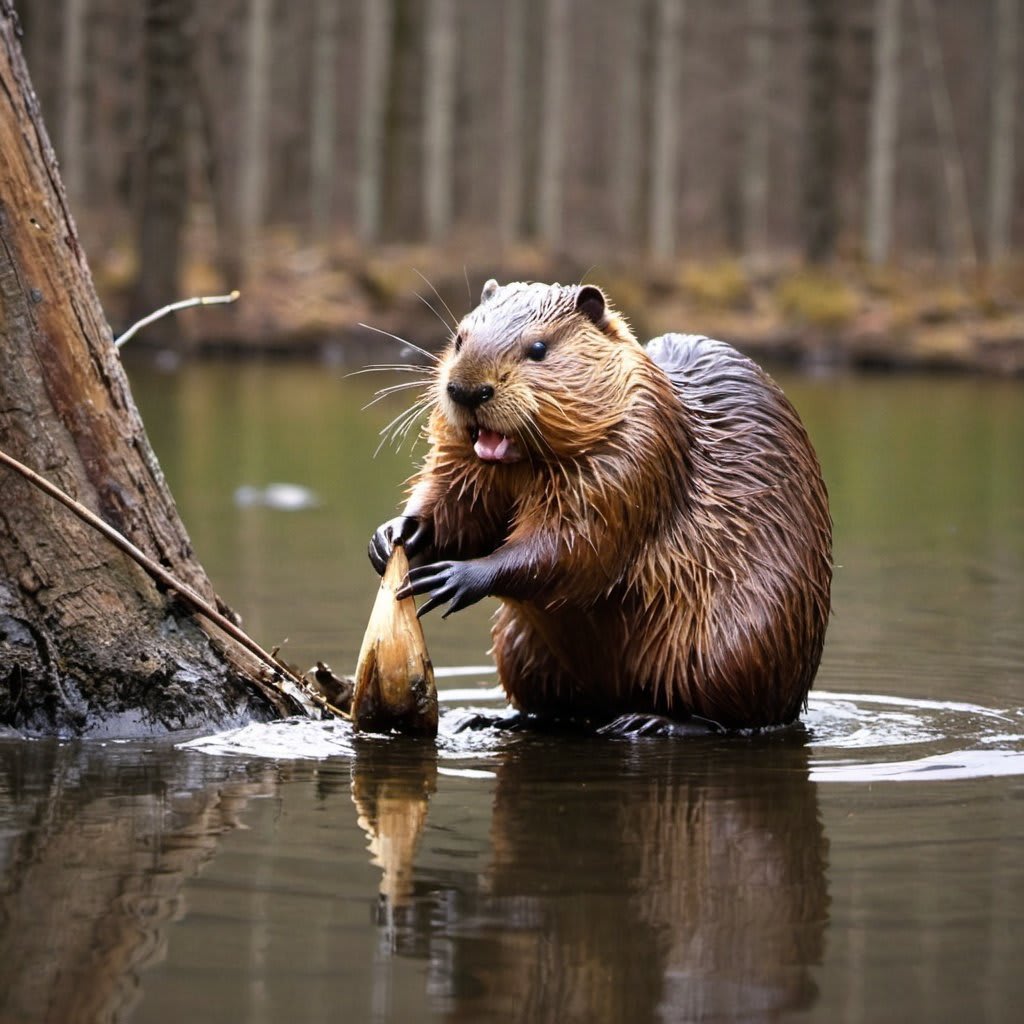How Beavers Help The Environment
The Ecosystem Engineers

Beavers, often referred to as "ecosystem engineers," play a crucial role in shaping and maintaining healthy ecosystems. These industrious rodents are renowned for their ability to transform landscapes through dam-building activities, which have far-reaching benefits for both wildlife and the environment. Let's explore how beavers contribute to the health and resilience of ecosystems.
Creating Wetland Habitat:
Beavers are master builders, constructing elaborate dams using branches, mud, and rocks to block streams and create ponds. These ponds serve as vital wetland habitats, supporting a diverse array of plant and animal species. Wetlands provide essential functions such as water filtration, flood control, and erosion prevention. They also serve as breeding grounds for amphibians, nesting sites for birds, and feeding areas for a variety of wildlife.
Improving Water Quality:
The construction of beaver dams helps to improve water quality by trapping sediment and pollutants upstream. As water flows through the dam and pond system, suspended particles settle out, leading to clearer and cleaner water downstream. This sediment trapping function is particularly beneficial in agricultural areas, where runoff from fields can carry excess nutrients and pollutants into waterways. By acting as natural filtration systems, beaver dams contribute to the overall health of aquatic ecosystems.
Restoring Riparian Zones:
Beavers play a crucial role in restoring and maintaining riparian zones—the areas of land adjacent to rivers and streams. By building dams and creating ponds, beavers help to slow the flow of water, reducing erosion and allowing sediment to accumulate along stream banks. This process promotes the growth of vegetation, including trees, shrubs, and grasses, which stabilize the soil and provide habitat for a wide range of species. Healthy riparian zones are essential for maintaining biodiversity, regulating water temperature, and providing food and shelter for aquatic and terrestrial organisms.
Enhancing Biodiversity:
The presence of beavers and their dams creates a mosaic of habitats that support a diverse array of plant and animal species. Wetlands created by beaver activity provide breeding and foraging habitat for amphibians, fish, waterfowl, and mammals such as muskrats and otters. The slow-moving water and abundant vegetation in beaver ponds attract insects, which in turn provide food for fish and other aquatic organisms. Overall, the complex interactions facilitated by beaver activity contribute to higher levels of biodiversity within freshwater ecosystems.
Mitigating Floods and Droughts:
Beavers play a crucial role in regulating water flow within watersheds, which can help mitigate the impacts of both floods and droughts. During periods of heavy rainfall, beaver dams act as natural flood barriers, slowing the movement of water and reducing the downstream flow of floodwaters. By storing water in their ponds during wet periods, beavers also help to recharge groundwater supplies and maintain base flows in streams and rivers during dry periods. This natural water storage capacity provides resilience to ecosystems and helps to buffer against the effects of climate change.
Carbon Sequestration:
Wetlands created by beaver activity serve as important carbon sinks, storing significant amounts of carbon in the form of organic matter. As beaver ponds accumulate sediment and plant material over time, they become highly efficient at trapping and storing carbon from the atmosphere. This process helps to mitigate climate change by removing carbon dioxide—a greenhouse gas—from the atmosphere and storing it in long-term reservoirs. By promoting the formation of wetlands, beavers contribute to global efforts to combat climate change and reduce carbon emissions.
Promoting Stream Health:
Beavers play a vital role in shaping the physical characteristics of streams and rivers, which in turn affects stream health and ecosystem function. The dams and ponds created by beavers create diverse habitat conditions, including deep pools, riffles, and runs, which support a wide range of aquatic organisms. These habitat structures help to oxygenate the water, regulate water temperature, and provide refuge for fish during periods of high flow. Additionally, the slowing of water flow caused by beaver dams reduces stream erosion and promotes the deposition of sediment, which is essential for maintaining healthy stream channels.
In conclusion, beavers are essential ecosystem engineers that contribute in numerous ways to the health and resilience of aquatic and riparian ecosystems. Through their dam-building activities, beavers create wetland habitats, improve water quality, restore riparian zones, enhance biodiversity, mitigate floods and droughts, sequester carbon, and promote stream health. As stewards of the environment, it's crucial to recognise the valuable role that beavers play and to support conservation efforts that protect and preserve their habitats.
If you find this piece interesting, please consider leaving a ♥️, subscribing for free or even leaving a tip. Your support means a lot to me as a writer!
About the Creator
Charlotte Fay
Rambling outdoors & writing about it. Love a good adventure. Passionate about holistic wellness & the natural environment. Studying a Wildlife Ecology & Conservation Degree. I also love to write about a variety of subjects that interest me.






Comments
Charlotte Fay is not accepting comments at the moment
Want to show your support? Send them a one-off tip.